
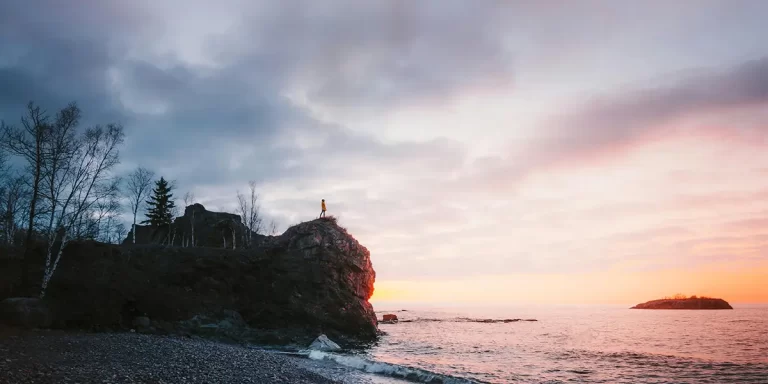
Backpacking in Minnesota offers the chance to explore breathtaking natural landscapes, from pristine lakes and dense forests to rugged trails and towering cliffs in the “Land of 10,000 Lakes.”
In this guide, we’ll share essential tips and the TOP 5 multi-day trails to tackle in Minnesota. Whether you’re a seasoned backpacker seeking a new challenge or a beginner eager to immerse yourself in the great outdoors, the North Star State has something for every adventurer.
Interested? Let’s get started.
Here are the top multi-day backpacking trails to explore in Minnesota:
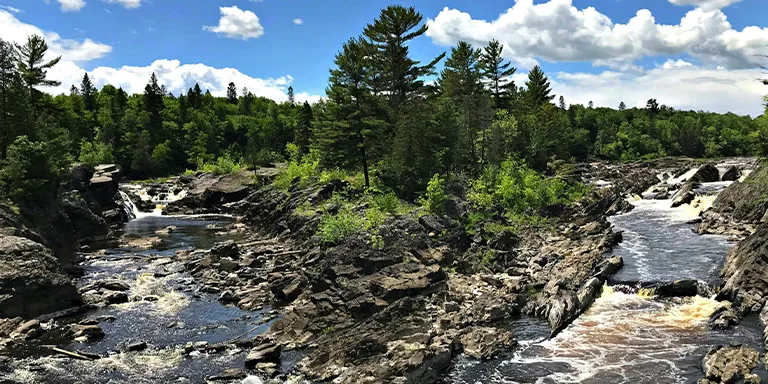
Length: 283.7 mi / 457 km
Type: Point to point
Difficulty: Hard
Elevation Gain: 34 530 ft / 10 525 m
Location: Jay Cooke State Park
Estimated Hiking Calorie Burn: 70 500 calories
More Details: See on AllTrails
Maintained by the Superior Hiking Trail Association, the 283.7-mile Superior Hiking Trail follows the rugged, scenic ridgeline above Lake Superior from the Wisconsin-Minnesota border to Canada, offering a challenging but renowned wilderness backpacking experience with incredible lake vistas over a roughly 116-hour journey best tackled between May-September.

Photo by Willard
Length: 13.1 mi / 21 km
Type: Loop
Difficulty: Hard
Elevation Gain: 1525 ft / 465 m
Location: Superior National Forest
Estimated Hiking Calorie Burn: 4700 calories
More Details: See on AllTrails
Ideal for solitary backpacking adventures from May-October, the challenging 13.1-mile (around 15-mile) loop trail near Ely, Minnesota leads through the scenic Boundary Waters offering spectacular views high above Angleworm Lake, gorgeous rocky terrain with potential creek crossings, downed trees to navigate, and opportunities to spot wildlife like wolf tracks and moose signs while camping at secluded sites.
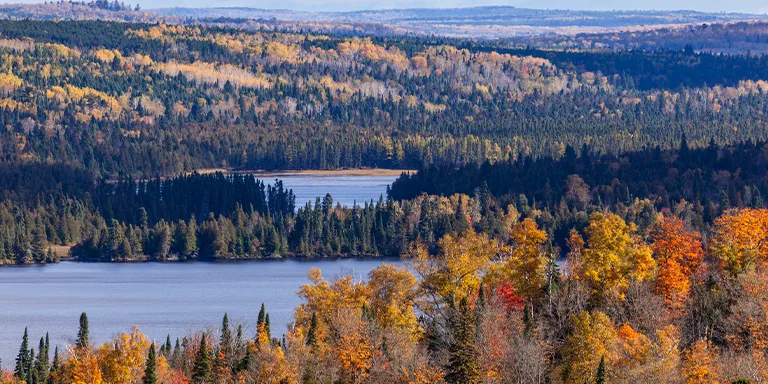
Photo by igorkov
Length: 31.2 mi / 50.2 km
Type: Loop
Difficulty: Hard
Elevation Gain: 2841 ft / 866 m
Location: Superior National Forest
Estimated Hiking Calorie Burn: 11 500 calories
More Details: See on AllTrails
An challenging but rewarding backpacking adventure year-round, the grueling 31.2-mile loop with frequent beaver dam obstacles, river crossings, downed trees, thick vegetation, constant elevation changes, and muddy terrain requires navigating off-trail at times to access beautiful secluded lakeside campsites like Agawato and Pageant while potentially spotting wildlife like bears, all part of the remoteness that draws backpackers seeking solitude during the 11-12 hour trek.
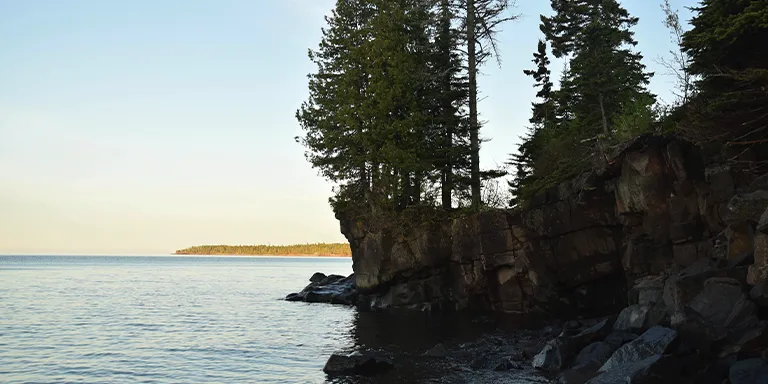
turn off your computer and go outside, CC BY-SA 2.0, via flickr
Length: 47.9 mi / 77 km
Type: Point to point
Difficulty: Hard
Elevation Gain: 6932 ft / 2113 m
Location: Schroeder
Estimated Hiking Calorie Burn: 19 200 calories
More Details: See on AllTrails
The challenging 47.9-mile point-to-point section from Temperance River to Grand Marais is a popular but relatively secluded part of the legendary Superior Hiking Trail, taking backpackers around 20 hours to traverse the rugged terrain while camping and enjoying incredible lake views during the prime April-October season, though bug protection is highly advised.
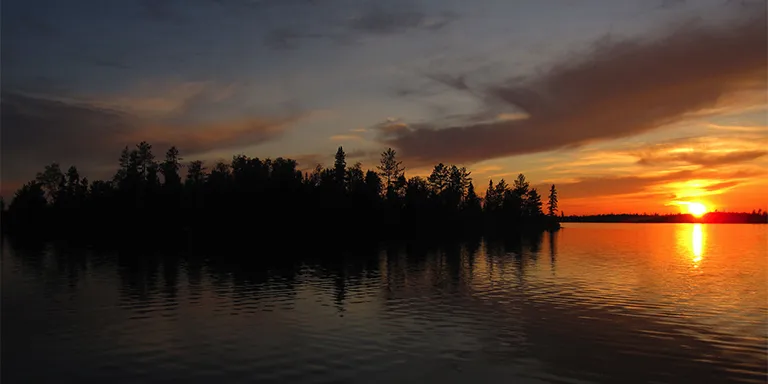
David Grant, CC BY-SA 2.0, via flickr
Length: 38.6 mi / 62.1 km
Type: Point to point
Difficulty: Hard
Elevation Gain: 3415 ft / 1041 m
Location: Ely
Estimated Hiking Calorie Burn: 13 800 calories
More Details: See on AllTrails
Attempted only by experienced backpackers over 3-5 days, the rugged 38.6-mile Kekekabic Trail demands navigating rocky terrain, downed trees, beaver dams, steep inclines/declines, and navigating stretches with limited water sources through remote wilderness without cell service, requiring a light pack, proper footwear, downloaded maps and a compass to complete the 14-hour scenic but grueling journey.
The weather for backpacking in Minnesota can vary depending on the season. Here’s a general overview:
Before making your outdoors gear selection, take a look at the weather statistics for Minnesota (Silver Bay):
| Jan | Feb | Mar | Apr | May | Jun | Jul | Aug | Sep | Oct | Nov | Dec | |
|---|---|---|---|---|---|---|---|---|---|---|---|---|
| High °F | 23 | 27 | 37 | 49 | 61 | 70 | 76 | 74 | 64 | 52 | 38 | 26 |
| Low °F | 6 | 8 | 18 | 30 | 39 | 48 | 54 | 53 | 45 | 35 | 24 | 12 |
| Rain/Snow (D*) | 4 | 3 | 5 | 7 | 9 | 11 | 10 | 10 | 9 | 8 | 6 | 5 |
Not sure if Minnesota is right for you?
Don’t forget to check out our backpacking guides for Iowa and Wisconsin.
If you’re backpacking in Minnesota and want to have a campfire, it depends on where you camp and the current rules. In most state parks and forests, campfires are allowed, but they must be in designated areas and fully extinguished before leaving. Check for any seasonal burn bans due to high fire danger. Contact local authorities or visit state park offices and national forest visitor centers for the latest information on fire restrictions in the area you plan to visit.
Make noise on trails to avoid surprising animals, store food securely to discourage bears, and back away slowly if you encounter one. If charged by a bear, stand your ground and use bear spray if you have it. Coyotes usually steer clear of humans, but keep your pets leashed. Deer are harmless but easily startled, so give them space. Don’t disturb wildlife babies, as their mothers are likely nearby. While venomous snakes like rattlesnakes exist, they’re not aggressive unless threatened, so give them plenty of space if you see them on the trail.
Fishing is a favorite activity for backpackers in Minnesota, thanks to the many lakes and rivers. You can catch tasty fish like trout, walleye, northern pike, and bass using compact ultralight gear at remote sites. In winter, there’s even ice fishing. Remember to check licensing requirements, follow the seasons, clean up waste away from water, and consider catch and release.
Embark on an excursion through Minnesota’s great outdoors for an adventure immersed in nature, but be sure to prioritize safety. Acquire a detailed trail map before following paths through dense Northwoods forests, and inform others of your intended route. Pack brightly colored clothing, first-aid supplies, flashlights, whistles and bear-resistant food containers. Watch your footing on uneven, rocky terrain. Make noise to avoid surprising bears, moose or other wildlife. Stay hydrated and focused so you can fully revel in Minnesota’s natural splendor while keeping safety a priority. With adequate precautions taken, you can delight in the beauty of Minnesota’s backcountry wilderness. Stay alert, be ready for the unexpected, and remember prudent planning prevents poor performance on a Minnesota backpacking trip.